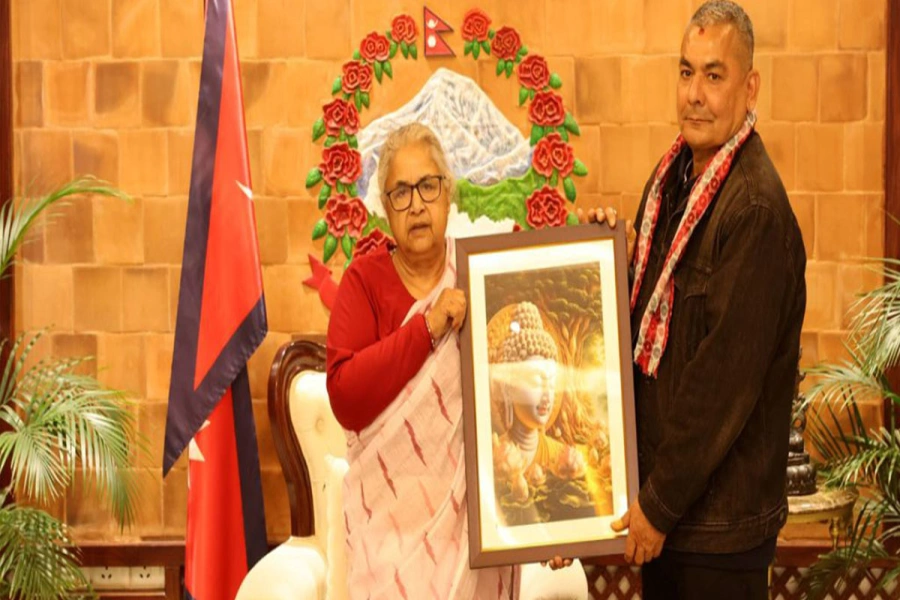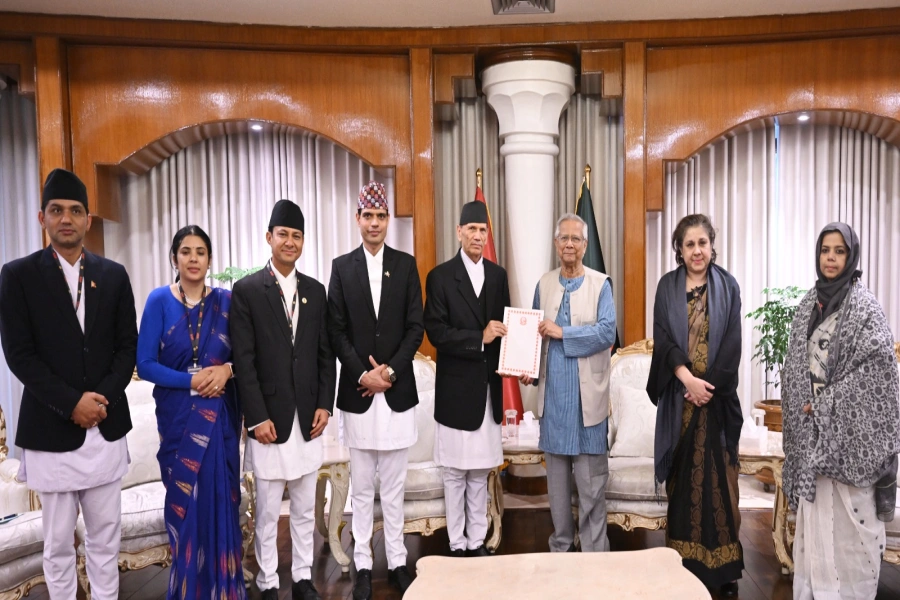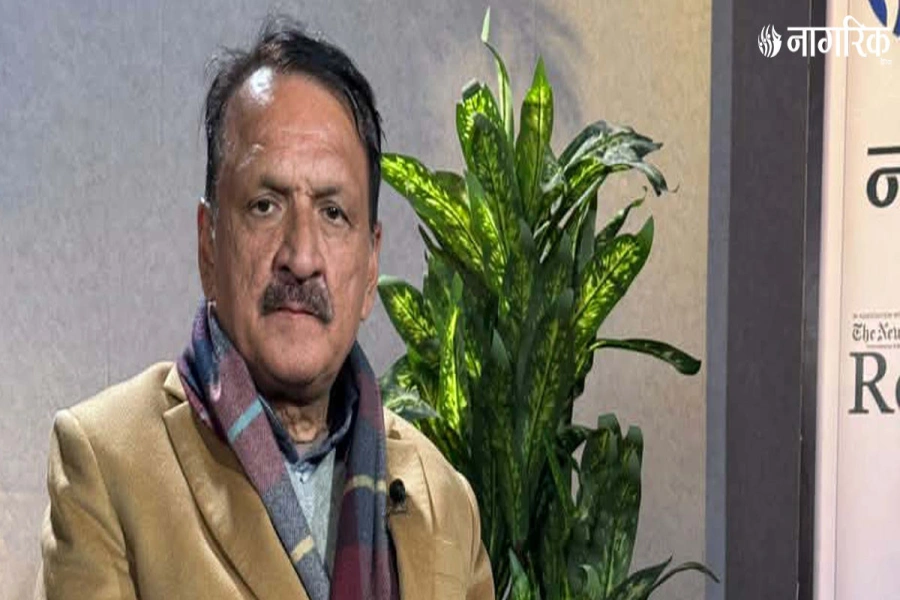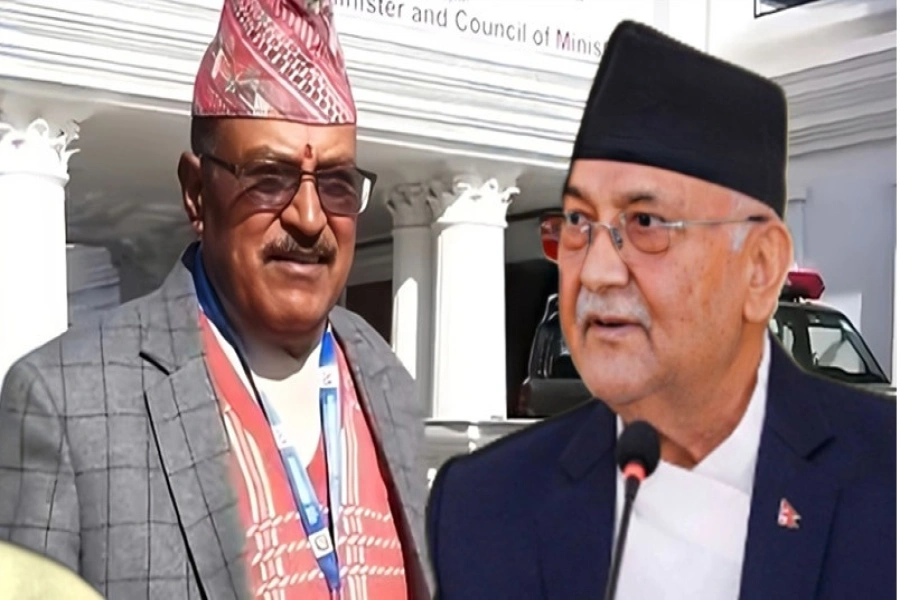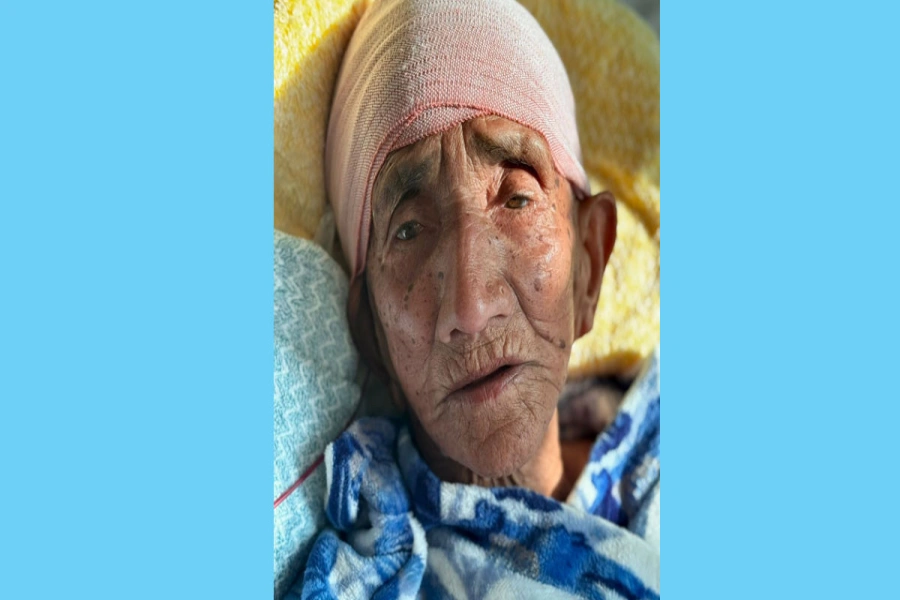Gyanendra should follow Pu Yi's path: PM Oli
KATHMANDU, October 16: The crown, scepter and ceremonial sword of the kings of Nepal were finally put on public display at Narayanhiti Palace Museum on Monday, nearly a decade after the Shah dynasty was abolished.
Prime Minister KP Oli inaugurated the display amid a function. After the function, members of the general public were allowed to see the crown.
Plan to display royal crown still delayed

King Gyanendra abdicated the throne on June 11, 2008 after parliament unanimously declared Nepal a federal democratic republic. The palace was then handed over to the government and developed as a museum in February 2009.
Though many priceless items once belonging to the royal dynasty were open to public view, the crown and royal scepter, the monarchy's prime symbols, weren't available for viewing until now.
The Ministry of Culture, Tourism and Civil Aviation organized a special function Monday to mark the display of the crown, scepter and royal sword .
The crown and scepter are on display in the Surkhet and Rupandehi Halls along with the queen's crown and the sword . All the precious objects are inside a bulletproof showcase.
Museum officials believe the newly added royal items will draw more tourists. “The number of visitors to the museum will double or triple,” said museum chief Rohit Dhungana.
Speaking at the function Monday, PM Oli drew parallels between Gyanendra and Emperor Pu Yi, China's last. “His life consisted of two parts- life as emperor and life as a commoner”, Oli said adding, “I suggest that Gyanendra follow that path also.”
Oli also commented that crowns are worn to cover the fear and hollowness of kings. “The misconception that wearing a crown makes one powerful has been ended”, he said .
Special security arrangements have been made to safeguard the crown. According to museum chief Dhungana, an integrated surveillance system has been installed.




